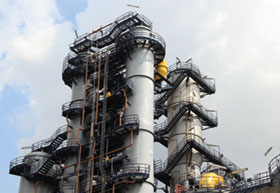

Industry standards mandate safety lifecycle management. Most industrial organisations are aware of and comply with those standards. However, it may be difficult to demonstrate compliance if the necessary software applications and functionality are not available.
It is common for owner-operators to be in compliance with safety standards from FAT/SAT up to plant startup and commissioning. That is an exemplary beginning, but the ultimate goal should be to exceed the minimum safety requirement specifications by being able to prove compliance throughout the entire operating lifecycle of the plant.
By working with their automation and safety system suppliers, end users can benefit from a value-adding workflow that could help them prove compliance over time, even as plant production assets and automation systems evolve.
Current situation
Most end users comply with international standards that require safety lifecycle management. However, they may find it challenging to prove such compliance without the necessary tools to collect and report the required information.
While end users may have compiled a great deal of recent proof test data, those data are likely stored in an isolated location and not integrated or shared either with their computerised maintenance management system (CMMS) or with the enterprise-level production and work process management systems.
ARC Advisory Group has been speaking with end users as part of our research into safety lifecycle management practices and compliance. When asked about this subject, most users focused on compliance, compliance assessments, and their ability to prove compliance.
The safety integrator and end user communities alike have been focused on defining safety requirements, determining safety integrity levels (SIL), and layer of protection analysis (LOPA)-driven designs. In the past, ARC highlighted that many automation and safety system suppliers do not provide end users with a comprehensive solution set for safety lifecycle management. We believe that this represents an opportunity for technology suppliers and end users alike.
An opportunity
With help from their automation and safety system suppliers, end users can benefit from a workflow that, previously, they may just have regarded as a compliance exercise. This presents an opportunity for the suppliers to provide value-adding functionality. Unfortunately, many automation companies have not provided a full solution for safety lifecycle management. Instead, some attempted to adapt their limited offerings to be able to meet the end users’ more comprehensive needs. ARC has observed that those needs change as process safety expertise has matured and new technologies have transformed the global economy.
Most of the emphasis so far has come from the ‘definition and implementation’ side of safety lifecycle management. As previously mentioned, the vast majority of industrial organisations are in compliance with safety standards up to the time of startup. While that is good, it is not the ultimate goal.
That goal, according to the standards, is to go beyond the minimum safety requirements specification and past the FAT/SAT through startup. ARC research shows that the majority of owner-operators comply with both IEC 61511 and ISA-84.00.04 . . . up to a point. We have observed that different plants display different behaviours following startup that relate to essential elements for maintaining compliance with SIL requirements and protective or mitigative requirements.
Ostensibly, all is well until the equipment is started up. Most end users perform proof tests at calculated intervals and store the results (ideally, in electronic format). But this does not go far enough and ARC believes it points to an unmet need within the user community.
Comprehensive solutions needed
Automation and safety system suppliers typically offer tools to help determine required SIL levels. These may include some rudimentary utilities that enable them to show some level of traceability for changes to the logic solver programming. While many suppliers do not offer a full suite of software that provide traceability of safety instrumentation maintenance activities, ARC has observed a shift over the last several years away from custom safety lifecycle management approaches toward offerings that promise and deliver a full solution. These can deliver and/or support:
• Functionality for archiving, retrieving, and modelling data.
• Scalability up to the multi-plant enterprise wide level.
• Safe and secure near-real-time data integrations.
• Secure integrations for the skilled mobile safety worker.
• Secure throughput optimised data integrations to level 3 and level 4 enterprise applications.
Due diligence delivers optimised behaviours
Standards organisations are collaborating and have developed recommendations for end users that cover both SIL determination and best practices for safety lifecycle management. Those organisations are taking a broader view of production operations that highlight for end users that being in compliance with safety lifecycle management requirements involves proving compliance beyond their site acceptance tests and the production commissioning of their equipment, controllers, and process.
Safe behaviours and practices touch all aspects of your operations. SIL determinations, hazard mitigations, and SIF maintenance issues endure long past the time you start up your units.
For more information contact Paul Miller, ARC Advisory Group, +1 781 471 1141, [email protected], www.arcweb.com
© Technews Publishing (Pty) Ltd | All Rights Reserved